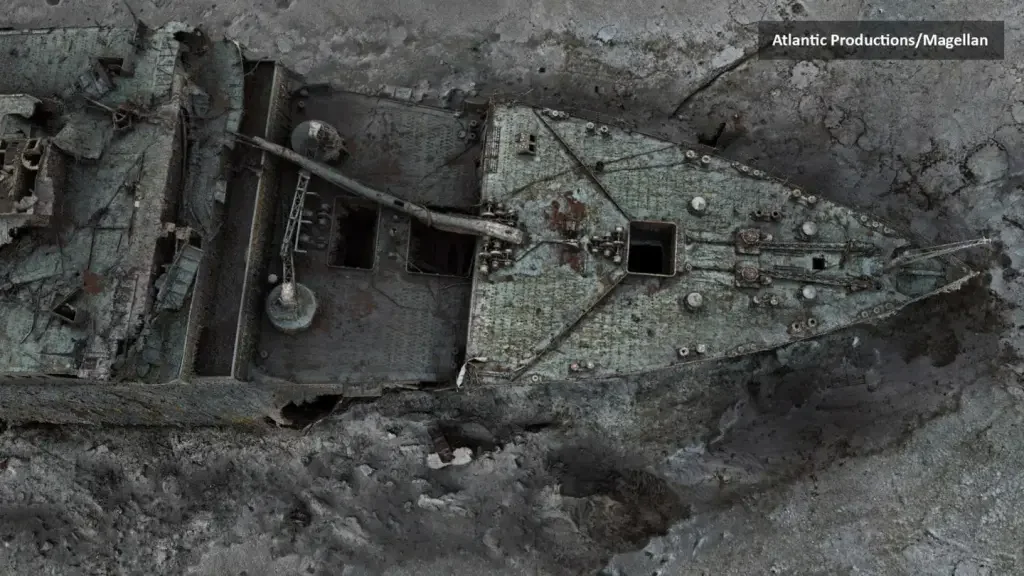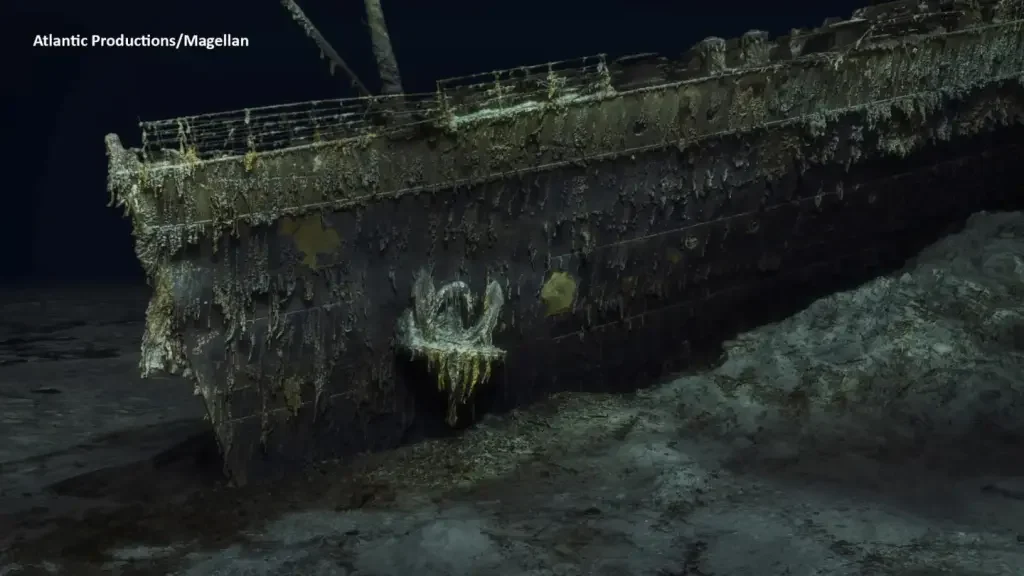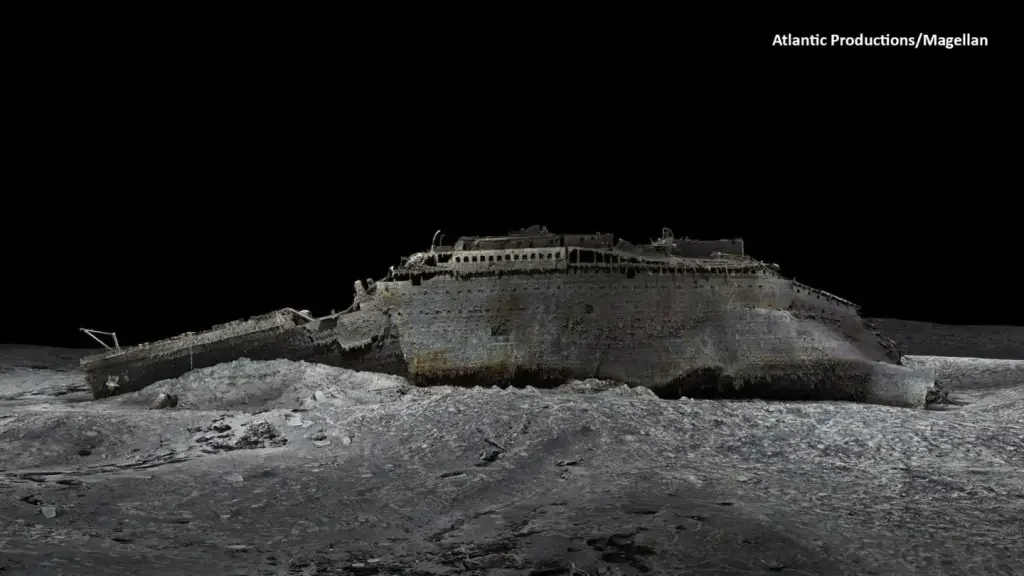On the 113th anniversary of the Titanic’s sinking, National Geographic is preparing to unveil a groundbreaking documentary that provides a strikingly detailed view of the world’s most infamous maritime disaster.
Thanks to state-of-the-art underwater scanning technology, viewers will be presented with a highly accurate 3D digital model of the wreck—capturing every rivet of the ship that tragically went down in the icy North Atlantic.
The new documentary is the result of a two-year investigative effort led by filmmaker Anthony Geffen and the deep-sea mapping firm Magellan.
Elon Musk Called This Financial News ‘Terrifying’
Completed in 2022, their work has now yielded findings that challenge long-held assumptions about what truly happened in the final hours of the R.M.S. Titanic.

Image Credit: Courtsey of Atlantic/Magellan
The Titanic struck an iceberg at approximately 11:40 p.m. on April 14, 1912, just under 400 miles south of Newfoundland, Canada.
Within three hours, the so-called “unsinkable” ship had slipped beneath the freezing waters—estimated at 28 °F—claiming more than 1,500 lives out of the 2,240 passengers and crew on board.
One of the documentary’s most powerful revelations involves the discovery of an open steam valve deep in the wreckage.
FREE Concealed Carry Gun Laws & Reciprocity Map
This detail suggests that dozens of crew members remained at their stations long after impact, working to keep the ship’s electricity running in order to send distress signals.
Their actions bought valuable time, even as the ship’s fate was sealed.
Yet, being nearly 370 miles from Newfoundland and over 1,200 miles from New York City, help was too far away. Few vessels were within range to respond quickly to the Titanic’s cries for help.
The digital scans also upend popular cinematic portrayals of the disaster, particularly James Cameron’s 1997 film Titanic.

Image Credit: Courtsey of Atlantic/Magellan
“The Titanic didn’t split cleanly in two—it was violently torn apart, ripping through first-class cabins where prominent passengers like J.J. Astor and Benjamin Guggenheim may have sought refuge as the ship went down,” stated National Geographic.
Modern audiences might remember these figures from the film, portrayed by Jonathan Hyde and Michael Ensign. Tragically, neither man survived the sinking.
The new research also casts a more sympathetic light on First Officer William Murdoch, who has long been accused of dereliction of duty.
Contrary to past narratives, the documentary suggests Murdoch and his crew were overwhelmed by the elements, likely swept overboard before they had a chance to reach the limited number of lifeboats.
At the time, the Titanic carried only 20 lifeboats—sufficient for fewer than 1,200 people in ideal conditions.
This left over a thousand souls without a means of escape when disaster struck.
The 3D scans have also revealed another sobering reality: the Titanic wreckage, located 12,500 feet below the ocean’s surface, is deteriorating rapidly.

Image Credit: Courtsey of Atlantic/Magellan
As time takes its toll on the iconic vessel, new plans to revisit the site are already stirring controversy.
Billionaire Larry Connor has announced intentions to explore the wreck in 2026 using a submersible.
The plan has drawn criticism from both governments and families of victims, many of whom view the site as sacred ground rather than a destination for deep-sea tourism.
As National Geographic’s documentary prepares to air, it promises not just a high-tech reexamination of the Titanic’s fate, but a moving tribute to the bravery, sacrifice, and tragedy that unfolded that fateful night in April 1912.
American Made Patriotic Apparel – Save 15% with Promo Code MERICA
The opinions expressed by contributors and/or content partners are their own and do not necessarily reflect the views of LifeZette. Contact us for guidelines on submitting your own commentary.





![Jasmine Crockett Justifies Mass Illegal Immigration With Bizarre Argument [WATCH]](https://www.right2024.com/wp-content/uploads/2025/03/1742007023_Jasmine-Crockett-Justifies-Mass-Illegal-Immigration-With-Bizarre-Argument-WATCH-350x250.jpg)

![NYC Tourist Helicopter Falls into Hudson River, Siemens Executive and Family Among Those Killed [WATCH]](https://www.right2024.com/wp-content/uploads/2025/04/NYC-Tourist-Helicopter-Falls-into-Hudson-River-Siemens-Executive-and-350x250.jpg)

![Red Sox Fan Makes the ‘Catch of the Day’ with Unconventional ‘Glove’ [WATCH]](https://www.right2024.com/wp-content/uploads/2025/04/Red-Sox-Fan-Makes-the-‘Catch-of-the-Day-with-350x250.jpg)






